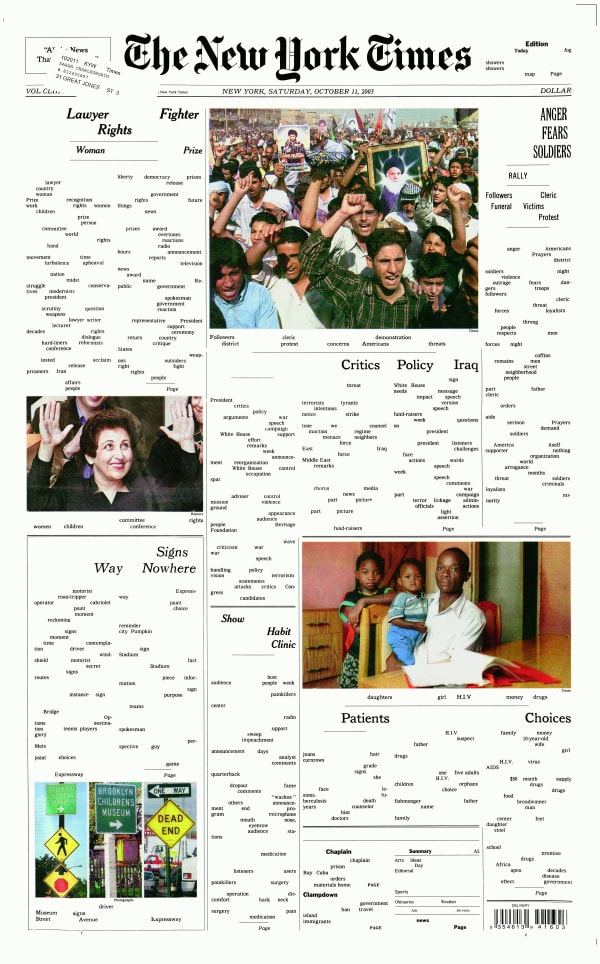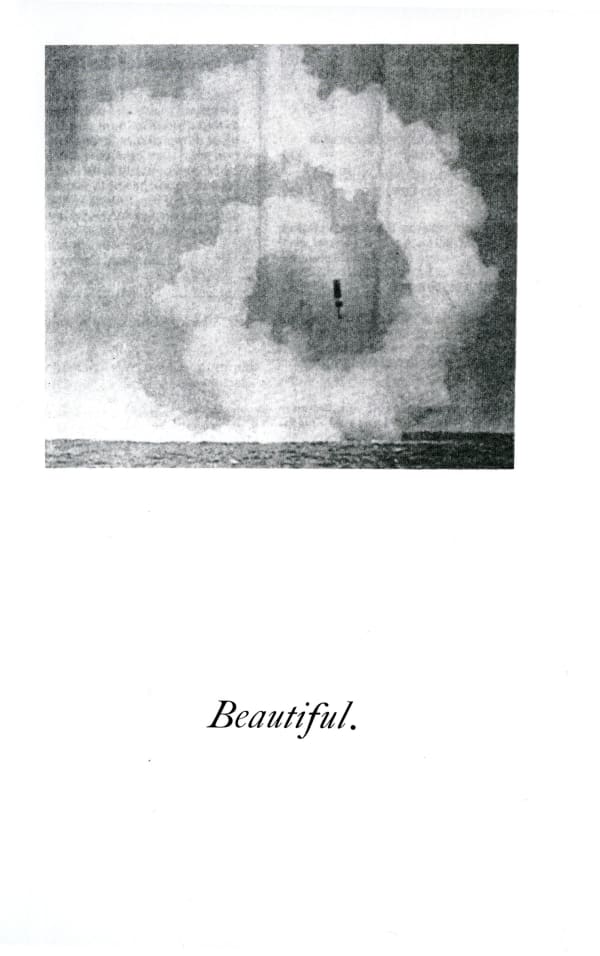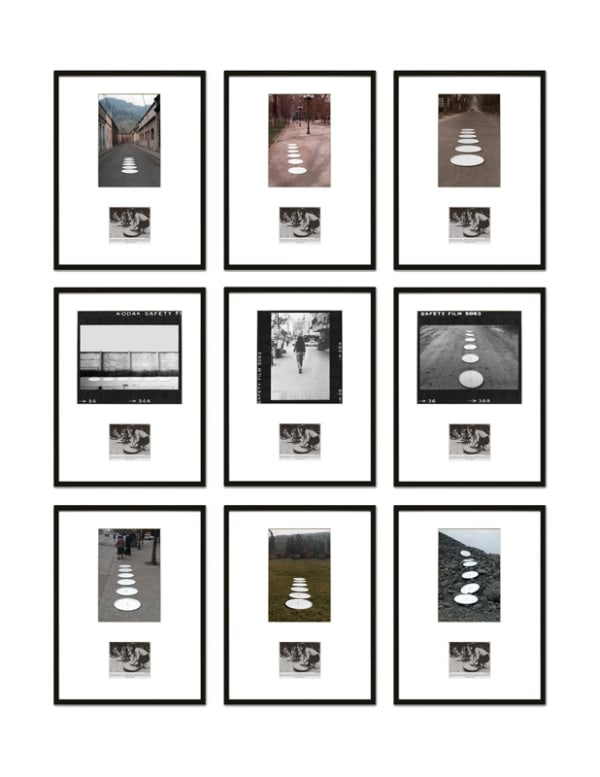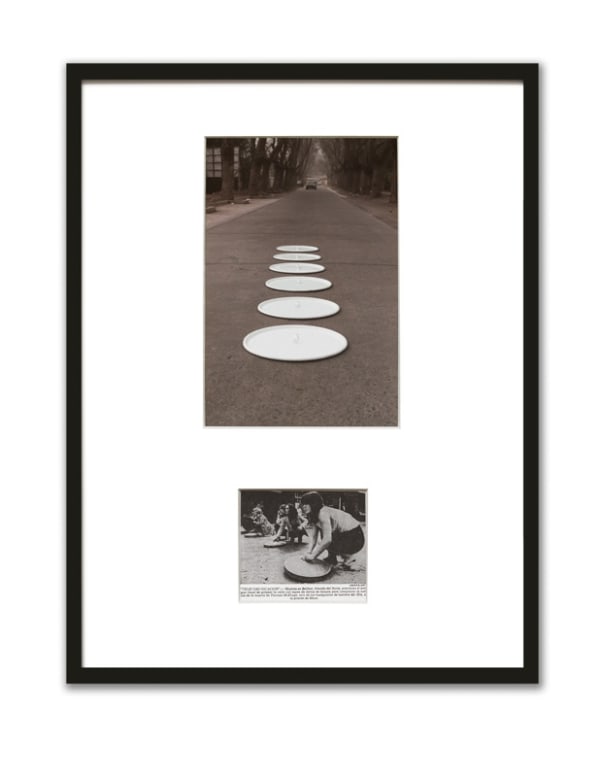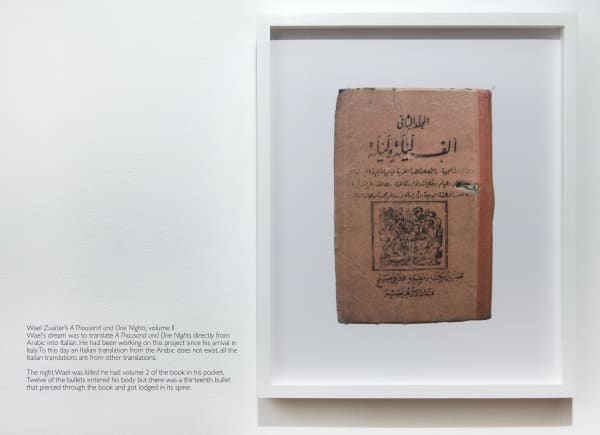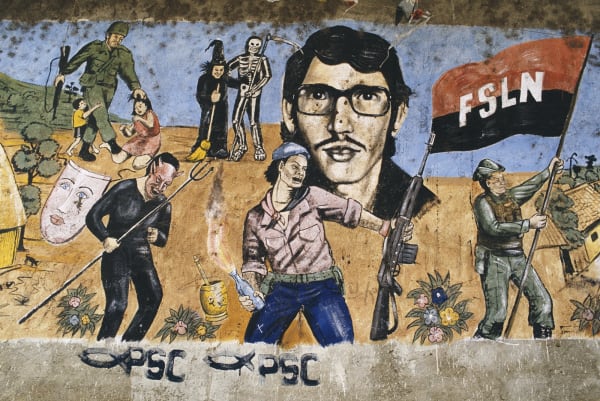Re-Framing History
-
Press Release
Sarah Charlesworth, Juan Manuel Echavarría, Felix Gonzalez-Torres, Alfredo Jaar, Emily Jacir, Susan Meiselas, Krzysztof Wodiczko
The context surrounding an image, or its isolation without context, addresses the question of how the framing and re-framing of images influences our understanding of what we see and more broadly, of history. This exhibition brings together Sarah Charlesworth, Juan Manuel Echavarría, Felix Gonzalez-Torres, Alfredo Jaar, Emily Jacir, Susan Meiselas, and Krzysztof Wodiczko, who demonstrate exceptional moral and formal rigor in their analysis of contemporary reality.
Sarah Charlesworth (1947-2013) is most often associated with the “pictures” generation of post-modern artists who came to prominence in the 1980s, using photography to construct and critique reality by employing familiar imagery. This is keenly apparent in Charlesworth’s work, Nouns, 2003, from her Modern History series. In Nouns, Charlesworth creates an imaginary front page of the New York Times in which only nouns and photos remain from the actual news sources.
A published writer before turning to video and photography, Colombian-born Juan Manuel Echavarría (b. 1947), uses an ancient form of communication – the oral tale – in his video Bocas de Ceniza (Mouths of Ash), 2003-04, to make present the humanity of individuals who experienced the atrocities of Colombian paramilitary actions over the last fifty years. Echavarría reframes the disembodied experience of reading an account in a newspaper to a direct, emotional experience in which we are participants and partners.
Felix Gonzalez-Torres (1957-1996) noted that the New York Times was one of his constant inspirations. He created his iconic "paper stack" works in the late 1980s and early 1990s. Manifestations of these works are made of neatly stacked sheets of paper and several of the works are printed with text or imagery from the Times. Gonzalez-Torres’ “paper stacks” are part of his paradigm of critique and generosity and allow for viewer participation. In "Untitled" (Beautiful), in conjunction with Louise Lawler, 1990, Gonzalez-Torres examines the repetition and recontextualizaion of an image. The image of Trident II, an expensive, broken war weapon, descending into the ocean with the word “Beautiful.” below it, is equally arresting and simple.
May 1, 2011 (2011) by Alfredo Jaar (b. 1956) depicts a controversial media image which was
nonetheless published widely internationally: the Situation Room of the White House, as the President and his Cabinet learn of Osama bin Laden’s assassination. Jaar adapts this scene in which the most important image is off screen and juxtaposes it with a white screen, symbolically representing the absent images. Jaar questions the meaning and responsibility of the visual and its power to transform a democracy.
Silenced historical narratives, resistance, and movement are recurring concerns in Emily Jacir’s (b. 1970) photographs, videos, and multi-media installations. Material for a film (2004–07) was based on the life of Wael Zuaiter, a Palestinian poet living in Rome in the 1970s. Jacir created an archive which included both re-articulated unknown items of Zuaiter’s ephemera, (including family photographs and correspondence) and documents connected to his assassination. Her own photos and writings, and interviews she conducted, comprise the bulk of the project. A selection of images from Material for a film will be dispersed throughout the exhibition.
Molotov Man is a photograph from Susan Meiselas’ (b.1948) landmark 1979 photo essay, Nicaragua, which documented the popular insurrection against the Somoza dictatorship through the final weeks of the Sandinista victory. The photograph of “Molotov Man” depicts Pablo 'Bareta' Arauz, throwing a Molotov cocktail at one of the last remaining National Guard headquarters, one day before Somoza would leave Nicaragua. Immediately chosen for publication by international magazines, the image became a symbol of the Nicaraguan revolution, and subsequently the artist’s authorship of the image was shared.
Krzysztof Wodiczko (b.1943) has championed access for the voiceless in our society over the last four decades. In Hiroshima Projection, 1999-2000, commissioned to commemorate the 50th anniversary of the bombings of Hiroshima and Nagasaki, Wodiczko filmed the hands of bombing victims from three generations who speak of the lasting effects of war and trauma. Wodiczko’s confrontational images expose the psychological, ethical, and political fallout of the bombing.
Each artist in Re-Framing History exemplifies a global awareness of history and the powerful responsibility of images in their individual practices. As pictorial representation becomes less trustworthy, the ways in which artists use imagery, modified or original, helps us to understand histories and cultures and examine the values and perceptions in society.
-
Installation ShotsNo images available.
-
Works
-

Felix Gonzales-Torres
"Untitled" (Beautiful), In conjunction with Louise Lawler, 1990
Print on paper, endless copies
36 x 23 x 29 inches (91.4 x 58.4 x 73.7 cm)
-

Juan Manuel Echavarría
Bocas de Ceniza (Mouths of Ash), 2003
Color film with sound
Running time: 18:15 minutes
Edition of 3
-

Sarah Charlesworth
April 19, 20, 21, 1978, 1978
Three black and white prints
Reproduced same sizes as original newspapers; dimensions variable
-

Sarah Charlesworth
Nouns, 2003
Fuji Crystal Archive print
15 x 22.75 inches (38.1 x 57.8 cm)
-

Felix Gonzales-Torres
"Untitled" (Beautiful), In conjunction with Louise Lawler, 1990
Detail view
-

Alfredo Jaar
May 1, 2011, 2011
Two LCD monitors and two framed prints on archival paper
210 x 28 inches (533.4 x 71.1 cm) overall
Edition of 3
-

Alfredo Jaar
Telecomunicacíon, 1981 18 digital prints in 9 frames
34.25 x 25.75 inches (87 x 65.4 cm) each
Edition of 3
-

Alfredo Jaar
Telecomunicacíon, 1981
Detail view 18 digital prints in 9 frames
34.25 x 25.75 inches (87 x 65.4 cm) each
Edition of 3
-

Emily Jacir
Material for a Film (detail) (coin), 2007
Digital c-print and wall text
26.75 x 49.6 inches (67.9 x 126 cm)
Edition of 7
-

Emily Jacir
Material for a Film (detail) (Telegram: 18/10/1972), 2007
Digital c-print
12 x 14 inches (30.5 x 35.6 cm)
Edition of 7
-

Emily Jacir
Material for a Film (detail) (Wael Zuaiter's 1001 Nights), 2007
Digital c-print and wall text
13.75 x 21 inches (34.9 x 53.3 cm)
Edition of 7
-

Emily Jacir
Material for a film (detail) Wael with book, 2007
Pigment print mounted on Cintra
34.5 x 34.5 inches (87.6 x 87.6 cm)
-

Susan Meiselas
Sandinistas at the walls of the Estelí National Guard headquarters: 'Molotov Man', Estelí, Nicaragua, July 16th, 1979, 1979
Chromogenic print
16 x 20 inches (40.6 x 50.8 cm)
-

Susan Meiselas
Wall stencil based on 'Molotov Man' Estelí, Nicaragua, 1982, 1982
Chromogenic print
9.25 x 13.9 inches (23.5 x 35.2 cm)
-

Susan Meiselas
Mural featuring Nicaraguan folk legends including the 'Molotov Man,' Masaya, Nicaragua, 1986, 1986
Chromogenic print
9.25 x 13.9 inches (23.5 x 35.2 cm)
-

Krzysztof Wodiczko
Hiroshima Projection, 1999-2000
Public video projection at the A-Bomb Dome, Hiroshima, Japan
-
-
Artist



